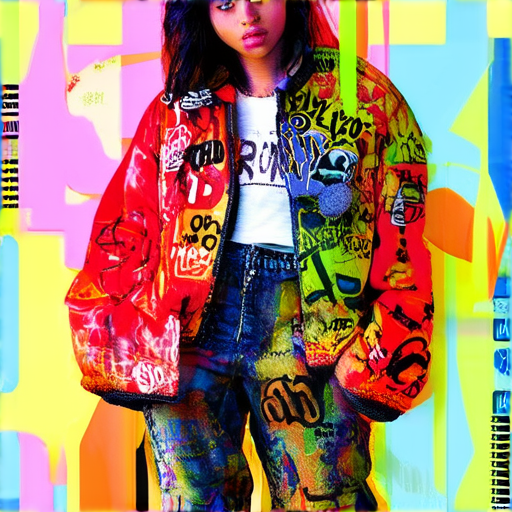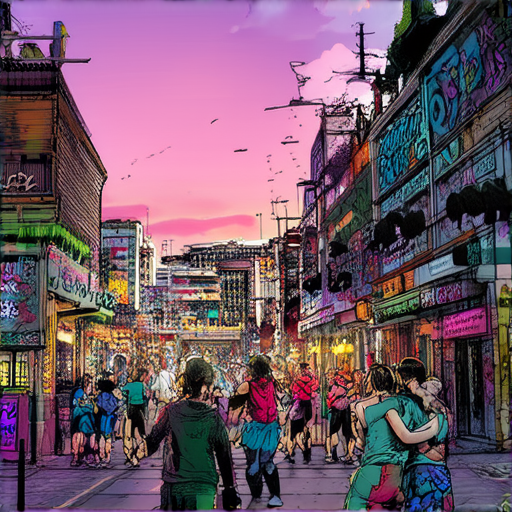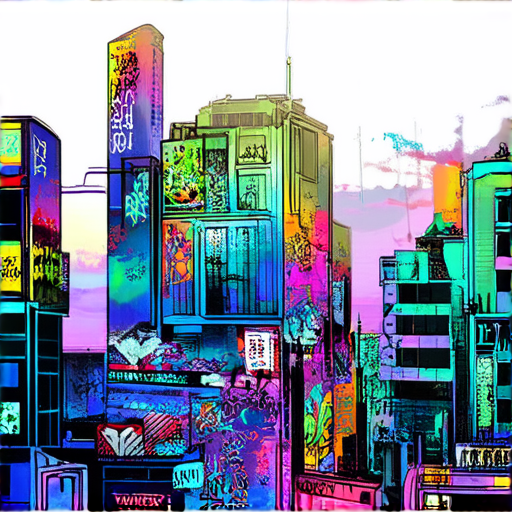As we navigate through the ever-changing landscape of hip hop culture, it’s essential to acknowledge its profound impact on modern society. From its roots in African American and Latino communities in the 1970s to its current global phenomenon, hip hop has evolved into a multifaceted force that influences music, fashion, art, and identity. With its unique blend of self-expression, social commentary, and cultural innovation, hip hop culture continues to shape the way we think, dress, and interact with one another.

Trends in Hip Hop
I’m always excited to dive into the latest developments in hip hop, and currently, there are several trends that have my attention.
-
Afrobeat Fusion
Incorporating elements of African music into hip hop beats and lyrics, Afrobeat fusion has been gaining momentum in recent years. Artists like Wizkid and Davido have successfully blended traditional African rhythms with modern hip hop production, resulting in a unique sound that resonates with fans worldwide.
-
Conscious Hip Hop
Focusing on social and political issues, conscious hip hop has experienced a resurgence in popularity. Artists like Kendrick Lamar and J. Cole have used their platforms to address pressing concerns, sparking important conversations and inspiring change.
-
Abstract Hip Hop
As a platform dedicated to exploring the world of hip hop music, art, and culture, I’m proud to say that abstract hip hop continues to thrive. With its emphasis on avant-garde production techniques, spoken word, jazz, funk, and electronic influences, abstract hip hop offers a refreshing alternative to mainstream hip hop.
-
Trap and Drill
The trap and drill genres have seen significant growth in recent years, characterized by their heavy, syncopated beats and often dark, introspective lyrics. Artists like Lil Baby and Polo G have achieved immense success with these styles, pushing the boundaries of what’s possible in hip hop.
-
Emo-Rap
Emerging as a subgenre of hip hop, emo-rap combines elements of emotional, personal lyrics with melodic flows and atmospheric production. Artists like XXXTENTACION and Juice WRLD have popularized this style, which has resonated with fans seeking authenticity and vulnerability in their music.
-
Old-School Revival
There’s a growing interest in revisiting classic hip hop sounds and styles, with many artists drawing inspiration from the golden era of hip hop. From DJ Premier’s soulful samples to MF DOOM’s intricate lyricism, old-school revival is bringing a fresh wave of creativity to the genre.
These trends demonstrate the diversity and innovation that define contemporary hip hop. As the genre continues to evolve, I’m excited to see how these styles intersect and influence one another, shaping the future of hip hop music.
The Four Cultures of Hip Hop
I’m passionate about exploring the diverse world of hip hop music, art, and culture.
-
DJing/Turntablism
- Scratching involves moving a record back and forth to create percussive sounds.
- Beat-juggling involves switching between two records to create complex rhythmic patterns.
- Sampling involves taking a portion of a song and reworking it into a new composition.
-
MCing/Rapping
- Rap music originated in the 1970s in the Bronx, New York City.
- Rappers often use rhyme schemes, wordplay, and storytelling techniques to engage listeners.
- Rap has become a global phenomenon, with artists from diverse backgrounds contributing to its evolution.
-
Bboying/Breakdancing
- Breakdancing involves a combination of athleticism, creativity, and musicality.
- Breakers often develop their own styles and routines, which can be influenced by music, fashion, and culture.
- Breaking has become a recognized sport, with international competitions and events.
-
Visual/Graffiti Art
- Graffiti art has been a part of hip hop culture since its inception.
- Artists use graffiti to convey messages, tell stories, and showcase their skills.
- Graffiti has become a recognized art form, with galleries and museums showcasing urban art.
- Rap Music: A fundamental element of hip hop culture, rap music has evolved significantly since its inception in the 1970s, incorporating diverse styles, genres, and themes.
- DJing and Turntablism: DJs and turntablists have played a crucial role in shaping hip hop culture, experimenting with beats, scratching records, and pushing the boundaries of sonic creativity.
- Breakdancing: Also known as b-boying or b-girling, breakdancing is a highly energetic and athletic dance style that originated in the 1970s, characterized by intricate footwork, spins, and freezes.
- Graffiti Art: Graffiti has been an integral part of hip hop culture since the early days, serving as a means of self-expression, social commentary, and artistic innovation.
- Beatboxing: Beatboxing involves vocal percussion, where artists mimic drum machines and other instruments using their voices, adding a new dimension to hip hop music and performance.
- Street Entrepreneurship: Hip hop culture has given rise to numerous entrepreneurs who have capitalized on the movement’s popularity, creating businesses, products, and services that cater to fans worldwide.
- Hip Hop Language: Hip hop language, also known as slang, has developed its own distinct vocabulary, idioms, and expressions, reflecting the culture’s unique perspective and experiences.
- Hip Hop Fashion: Hip hop fashion has become a significant aspect of the culture, influencing global fashion trends with bold, eclectic, and often provocative styles.
Djing, also known as turntablism, is the art of manipulating sound using two turntables and a mixer. This culture has evolved over the years, with DJs incorporating various techniques, such as scratching, beat-juggling, and sampling, to create unique sounds and rhythms.
MCing, short for emceeing, is the art of rapping or reciting lyrics over a beat. Rappers use their voices to tell stories, express emotions, and convey messages through their words.
Bboying, also known as breaking, is a style of street dance that originated in the 1970s. Breakdancers perform intricate footwork, spins, and flips to music, often in a competitive setting.
Visual art, also known as graffiti, is a form of self-expression that involves creating images or words on surfaces using various mediums, such as spray paint, markers, or stencils.
I’m excited to share my passion for hip hop culture with you, and I hope this article has provided a deeper understanding of the four cultures that make up this vibrant community.

What is the Popular Culture of Hip Hop?
Hip hop culture is a dynamic and multifaceted phenomenon that encompasses various aspects of music, art, fashion, and lifestyle.
The Evolution of Hip Hop Culture
Hip hop culture has undergone significant transformations since its emergence in the 1970s, influenced by social, economic, and technological factors.
- Golden Age (1979-1988): Characterized by the rise of iconic groups like the Sugarhill Gang, Grandmaster Flash, and Run-DMC, this era saw the development of hip hop’s core elements and the establishment of major record labels.
- West Coast vs. East Coast (1988-1998): This period witnessed intense rivalry between West Coast and East Coast hip hop scenes, marked by the emergence of Dr. Dre, Snoop Dogg, Tupac Shakur, and The Notorious B.I.G.
- Southern Rap and Crunk (1998-2008): Southern rap and crunk gained prominence, led by artists like OutKast, Lil Jon, and UGK, introducing a new wave of regional flavors and styles.
- Trap and Mumble Rap (2008-present): Trap and mumble rap have dominated contemporary hip hop, characterized by heavy production, melodic flows, and introspective lyrics.
Abstract Hip Hop and Its Significance
As a cultural platform, Abstract Hip Hop celebrates the diversity and complexity of hip hop culture, highlighting avant-garde production techniques, spoken word, jazz, funk, and electronic influences.
We recognize the importance of hip hop’s underground movement, which continues to push boundaries and challenge conventional norms.
Our mission is to provide a space for hip hop enthusiasts to explore the genre’s more unconventional sounds and ideas, fostering a deeper understanding and appreciation of hip hop culture.
Conclusion
Hip hop culture remains a vibrant and ever-evolving force, shaped by its rich history, diverse influences, and innovative spirit.
At Abstract Hip Hop, we strive to capture the essence of this complex and multifaceted phenomenon, celebrating its beauty, creativity, and resilience.

How Did Hip Hop Culture Influence Fashion Trends?
Hip hop culture has been a driving force behind many fashion trends, shaping the way people express themselves through clothing and style.
-
The Early Days of Hip Hop Fashion
-
The Rise of Streetwear
-
The Influence of Hip Hop on High Fashion
-
The Power of Self-Expression
-
The Future of Hip Hop Fashion
In the 1970s and 1980s, hip hop fashion was characterized by baggy jeans, oversized shirts, and gold chains. These styles were heavily influenced by African American and Latino cultures, and were often worn as a symbol of identity and affiliation.
As hip hop culture gained popularity in the 1990s, streetwear became a major player in the fashion industry. Brands like Nike, Adidas, and Tommy Hilfiger began to cater to the hip hop market, producing clothing and sneakers that reflected the culture’s bold and flashy aesthetic.
Today, hip hop culture continues to influence high fashion, with designers incorporating elements of streetwear and urban style into their collections. Luxury brands like Gucci and Louis Vuitton have collaborated with hip hop artists and influencers, further blurring the lines between high fashion and streetwear.
At its core, hip hop culture is about self-expression and individuality. Through fashion, hip hop enthusiasts can showcase their personality, values, and affiliations, making it a powerful tool for communication and connection.
As hip hop culture continues to evolve, we can expect to see even more innovative and daring fashion trends emerge. With the rise of social media, hip hop fashion has become more accessible and influential than ever before, inspiring a new generation of fashionistas and creatives.
From its humble beginnings in the Bronx to its current status as a global phenomenon, hip hop culture has left an indelible mark on the fashion industry. Its influence can be seen in everything from high-end designer collaborations to streetwear staples, and its impact will continue to be felt for years to come.
As a culture, hip hop is all about pushing boundaries and challenging norms. In fashion, this means embracing bold colors, statement pieces, and eclectic styles that reflect our individuality and creativity. Whether you’re a seasoned hip hop head or just discovering the culture, there’s never been a better time to express yourself through fashion.
So go ahead, get creative, and show the world what you’re working with. As the great philosopher, Biggie Smalls, once said, “Mo money, mo problems.” But with hip hop fashion, the possibilities are endless, and the only problem is choosing which outfit to wear next.
How Has Hip-Hop Changed Culture?
Hip-hop has been a driving force behind cultural evolution, pushing boundaries and challenging societal norms since its inception.
-
The Power of Self-Expression
Hip-hop provides a platform for individuals to express themselves freely, sharing their experiences, thoughts, and emotions through music, dance, and visual art.
-
Breaking Down Barriers
Hip-hop has enabled marginalized communities to have a voice, amplifying their stories and struggles, and fostering empathy and understanding among listeners.
-
Cultural Exchange and Fusion
Hip-hop has facilitated cross-cultural exchange, blending styles and influences from around the world, resulting in a rich tapestry of diverse musical expressions.
-
-
Social Commentary and Activism
Hip-hop has long served as a powerful tool for social commentary and activism, addressing issues such as racism, inequality, and social justice.
-
Raising Awareness and Sparking Conversations
Artists like Kendrick Lamar, J. Cole, and Chance the Rapper have used their platforms to shed light on pressing issues, sparking important conversations and inspiring change.
-
Mobilizing Communities and Fostering Empowerment
Hip-hop has empowered marginalized communities, mobilizing them to take action and demand justice, equality, and human rights.
-
-
Economic and Cultural Impact
Hip-hop has had a profound economic impact, generating billions of dollars in revenue and creating new industries, jobs, and opportunities.
-
From Underground Movement to Global Phenomenon
Hip-hop has evolved from an underground movement to a global phenomenon, influencing fashion, art, film, and popular culture.
-
Celebrating Diversity and Creativity
Hip-hop has become a celebration of diversity and creativity, embracing individuality and self-expression, and providing a platform for artists to showcase their talents.
-
In conclusion, hip-hop has profoundly impacted culture, serving as a powerful tool for self-expression, social commentary, and activism, while also having a significant economic and cultural impact.

What Influenced Fashion Trends
Fashion trends are shaped by various factors, including climatic changes, creative explorations, and political, economic, social, and technological effects.
- Climatic changes can influence fashion trends by introducing new materials and styles that cater to changing weather conditions.
- Creative explorations by designers and artists can lead to innovative and influential fashion trends.
- Political, economic, social, and technological effects can shape fashion trends by reflecting societal values and attitudes.
- Society and current events are often reflected in fashion, as they have been throughout history.
- Celebrities, musicians, and other high-profile individuals can also influence fashion trends through their public appearances and style choices.
Key Factors Influencing Fashion Trends
- Cultural Exchange: Globalization has led to increased cultural exchange, resulting in the fusion of different styles and influences in fashion.
- Social Media: Social media platforms have become a significant driver of fashion trends, allowing influencers and celebrities to showcase their personal styles and reach a vast audience.
- Economic Factors: Economic conditions can impact fashion trends by influencing consumer spending habits and the availability of certain materials and styles.
- Technological Advancements: Technological advancements have enabled the development of new materials, manufacturing processes, and distribution channels, which can shape fashion trends.
Examples of Influential Fashion Trends
Some notable examples of influential fashion trends include:
- The rise of sustainable fashion, driven by concerns about environmental impact and social responsibility.
- The increasing popularity of streetwear, fueled by the growth of urban culture and social media.
- The resurgence of vintage and retro styles, inspired by nostalgia and a desire for uniqueness.
These trends reflect the complex interplay between cultural, social, economic, and technological factors that shape fashion.




0 Comments